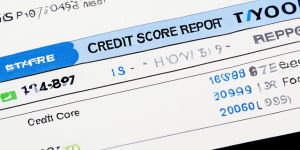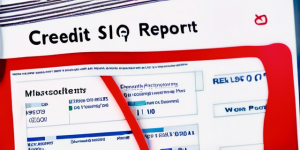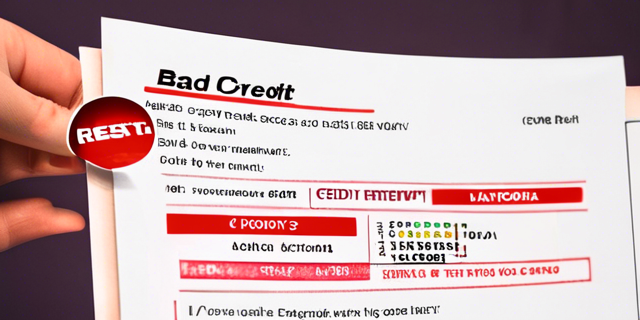How to Navigate the Mortgage Maze with Bad Credit 2024

Introduction
In a world where credit scores reign supreme, securing a mortgage with poor credit can feel like an uphill battle. However, it’s not an impossible feat. While lenders may view you as a higher risk, there are still options available to help you achieve the dream of homeownership. This comprehensive guide will explore strategies, tips, and crucial considerations for obtaining a mortgage despite having a less-than-perfect credit history.
Understanding Credit Scores and Their Impact
Before we dive into the nitty-gritty of securing a mortgage with bad credit, it’s essential to understand what constitutes a “bad” credit score and why it matters.
Credit scores are three-digit numbers ranging from 300 to 850, calculated based on your credit history, payment patterns, and outstanding debts. Higher scores indicate lower risk to lenders, while lower scores signal potential financial challenges.
Generally, credit scores below 670 are considered subprime or bad credit. Lenders view borrowers in this range as riskier investments, which can result in higher interest rates, stricter terms, or even outright rejections.
Improving Your Credit Score: A Worthwhile Endeavor

While having bad credit can make securing a mortgage more challenging, it’s not a lost cause. In fact, taking proactive steps to improve your credit score can significantly increase your chances of approval and potentially secure better rates.
Here are some strategies to consider:
- Review your credit report: Obtain copies of your credit reports from the major credit bureaus (Experian, Equifax, and TransUnion) and thoroughly review them for any errors or inaccuracies. Dispute any incorrect information, as it can negatively impact your score.
- Pay bills on time: Payment history is one of the most significant factors influencing your credit score. Make sure to pay all your bills (credit cards, utilities, rent, etc.) on time, every time.
- Reduce outstanding balances: High credit card balances can hurt your credit utilization ratio (the amount of credit you’re using compared to your total available credit), which can drag down your score. Aim to keep your balances below 30% of your total credit limit.
- Avoid opening too many new accounts: Each time you apply for new credit, it can result in a hard inquiry on your credit report, temporarily lowering your score. Only apply for new credit when necessary.
- Consider credit counseling: If you’re struggling with debt, seeking the guidance of a reputable credit counseling agency can help you develop a plan to manage your finances and improve your credit score over time.
Exploring Mortgage Options for Bad Credit

Even with less-than-perfect credit, there are still mortgage options available to you. Here are some avenues to explore:
1. FHA Loans
The Federal Housing Administration (FHA) insures loans offered by approved lenders, making it easier for borrowers with bad credit to qualify for a mortgage. FHA loans typically require a minimum credit score of 500 (with a 10% down payment) or 580 (with a 3.5% down payment).
While FHA loans come with more lenient credit requirements, they do have strict guidelines regarding debt-to-income ratios, employment history, and other factors. Additionally, borrowers are required to pay mortgage insurance premiums, which can increase the overall cost of the loan.
2. VA Loans
If you’re an active-duty military member, veteran, or eligible spouse, you may qualify for a VA loan backed by the U.S. Department of Veterans Affairs. VA loans do not have a minimum credit score requirement, making them an attractive option for those with bad credit.
However, lenders may still impose their own credit score minimums, typically ranging from 580 to 620. VA loans also come with strict eligibility requirements, such as meeting specific service length and discharge status criteria.
3. USDA Loans
The U.S. Department of Agriculture (USDA) offers mortgage programs for low-to-moderate-income borrowers in eligible rural areas. USDA loans have no minimum credit score requirements, making them a viable option for those with bad credit.
To qualify, you’ll need to meet income limits and purchase a property in a designated rural area. Additionally, USDA loans require upfront and annual mortgage insurance fees, which can add to the overall cost of the loan.
4. Non-Qualified Mortgage (Non-QM) Loans
Non-QM loans, also known as non-prime or non-conforming loans, are offered by private lenders and are not backed by government agencies. These loans are designed for borrowers who don’t meet the strict guidelines of conventional or government-backed mortgages, including those with poor credit.
Non-QM lenders evaluate borrowers based on alternative criteria, such as income stability, assets, and cash reserves, rather than solely relying on credit scores. However, these loans often come with higher interest rates and stricter down payment requirements.
5. Subprime Mortgages
Subprime mortgages are specifically designed for borrowers with poor credit histories. While these loans can provide a path to homeownership, they typically come with higher interest rates and less favorable terms.
It’s crucial to thoroughly evaluate the costs and risks associated with subprime mortgages, as they can potentially lead to higher monthly payments and a higher risk of default or foreclosure.
Boosting Your Chances: Tips for Securing a Mortgage with Bad Credit

While navigating the mortgage process with bad credit can be challenging, there are steps you can take to improve your chances of approval:
- Save for a larger down payment: A larger down payment can help offset the perceived risk associated with bad credit. Aim to save at least 10% (or more) of the home’s purchase price to demonstrate your financial commitment and reduce the lender’s exposure.
- Provide explanations for past credit issues: If there were extenuating circumstances that led to your poor credit, such as job loss, medical bills, or divorce, provide a written explanation to the lender. This can help them understand the context behind your credit challenges and potentially view your situation more favorably.
- Secure a co-signer or co-borrower: Having a co-signer or co-borrower with good credit can enhance your mortgage application’s strength. However, it’s crucial to understand the risks involved for both parties, as the co-signer or co-borrower will be equally responsible for the mortgage payments.
- Consider a non-occupant co-borrower: In some cases, lenders may allow a non-occupant co-borrower (such as a family member or close friend) to be added to the mortgage application. This can potentially boost your chances of approval by combining your income and assets with the co-borrower’s stronger credit profile.
- Shop around and compare rates: Different lenders have varying credit score requirements and underwriting guidelines. Shop around with multiple lenders to find the best rates and terms for your specific credit situation.
- Work with a mortgage broker: Mortgage brokers have access to a wide range of lenders and loan programs, including those catering to borrowers with bad credit. They can help identify the most suitable options and guide you through the application process.
Alternative Financing Options
If traditional mortgage paths prove challenging, consider exploring alternative financing options:
- Rent-to-own agreements: These arrangements allow you to rent a property for a specified period, with a portion of your rent payments going towards the eventual purchase of the home. Rent-to-own agreements can provide a path to homeownership while giving you time to improve your credit score.
- Owner financing: In some cases, homeowners may be willing to finance the sale of their property directly to you, bypassing traditional lenders. This option requires negotiating terms with the seller and typically involves higher interest rates and stricter down payment requirements.
- Personal loans or borrowing from retirement accounts: While not ideal, personal loans or borrowing from retirement accounts (if permitted) can provide the funds needed for a down payment or closing costs. However, these options should be carefully evaluated, as they can come with high interest rates and potential penalties or taxes.
Monitoring Your Credit and Staying on Track
After securing a mortgage with bad credit, it’s essential to maintain good financial habits and continue monitoring your credit. Here are some tips to help you stay on track:
- Make timely mortgage payments: Your mortgage payment history will have a significant impact on your credit score. Set up automatic payments or reminders to ensure you never miss a due date. Timely payments can gradually improve your credit score over time.
- Keep credit card balances low: While you may be tempted to celebrate your new homeownership by splurging, it’s crucial to keep credit card balances low. Aim for a credit utilization ratio below 30% to maintain a healthy credit score.
- Avoid opening too many new accounts: Opening multiple new credit accounts in a short period can be seen as a red flag by lenders and can negatively impact your credit score. Only apply for new credit when absolutely necessary.
- Monitor your credit reports regularly: Continue to check your credit reports from the major bureaus (Experian, Equifax, and TransUnion) on a regular basis. Look for any errors or inaccuracies and dispute them promptly to maintain accurate credit information.
- Consider credit counseling or debt management: If you’re still struggling with debt or managing your finances, seek the guidance of a reputable credit counseling agency or enroll in a debt management program. These services can provide valuable advice and strategies to help you get back on track.
- Refinance when possible: As your credit score improves, consider refinancing your mortgage to secure a lower interest rate and potentially save money over the life of the loan. However, be sure to factor in any associated closing costs and fees.
Conclusion
Securing a mortgage with bad credit may seem like an uphill battle, but it is achievable with the right strategies and perseverance. By understanding your options, taking proactive steps to improve your credit, and working closely with lenders, you can increase your chances of homeownership.
Remember, a less-than-perfect credit history is not a permanent roadblock. With time, dedication, and responsible financial habits, you can rebuild your credit and potentially qualify for more favorable mortgage terms in the future.
The path to homeownership with bad credit may be challenging, but the reward of owning your own piece of the American dream is well worth the effort.
FAQs
- What is the minimum credit score required for a mortgage? There is no universal minimum credit score requirement for a mortgage. Different loan programs and lenders have varying credit score thresholds. For example, FHA loans typically require a minimum score of 500 or 580, depending on the down payment amount. Conventional loans often require scores of 620 or higher. However, some lenders may consider alternative factors beyond credit scores for borrowers with bad credit.
- Can I get a mortgage with a credit score below 600? While it can be challenging, it is possible to obtain a mortgage with a credit score below 600. Government-backed loan programs like FHA, VA, and USDA loans may be more accessible options for those with lower credit scores. Additionally, some non-QM lenders and subprime mortgage lenders cater to borrowers with poor credit, although these loans often come with higher interest rates and stricter terms.
- How much of a down payment do I need with bad credit? Generally, a larger down payment can help offset the perceived risk associated with bad credit. Most lenders prefer a down payment of at least 10% for borrowers with poor credit, but some programs like FHA loans allow as little as 3.5% down for those with credit scores of 580 or higher. The more you can put down, the better your chances of approval and potentially securing more favorable terms.
- Can I get a mortgage if I have recent bankruptcies or foreclosures? Recent bankruptcies or foreclosures can significantly impact your ability to obtain a mortgage, as they are red flags for lenders. Most lenders require a waiting period of 2-4 years after a bankruptcy or foreclosure before considering you for a new mortgage. However, some non-QM and subprime lenders may have more lenient guidelines, but they may also require higher down payments and interest rates.
- How can I improve my chances of getting a mortgage with bad credit? To improve your chances of securing a mortgage with bad credit, consider the following strategies: save for a larger down payment, provide explanations for past credit issues, secure a co-signer or co-borrower with good credit, shop around with multiple lenders, work with a mortgage broker, and explore alternative financing options like rent-to-own agreements or owner financing.

